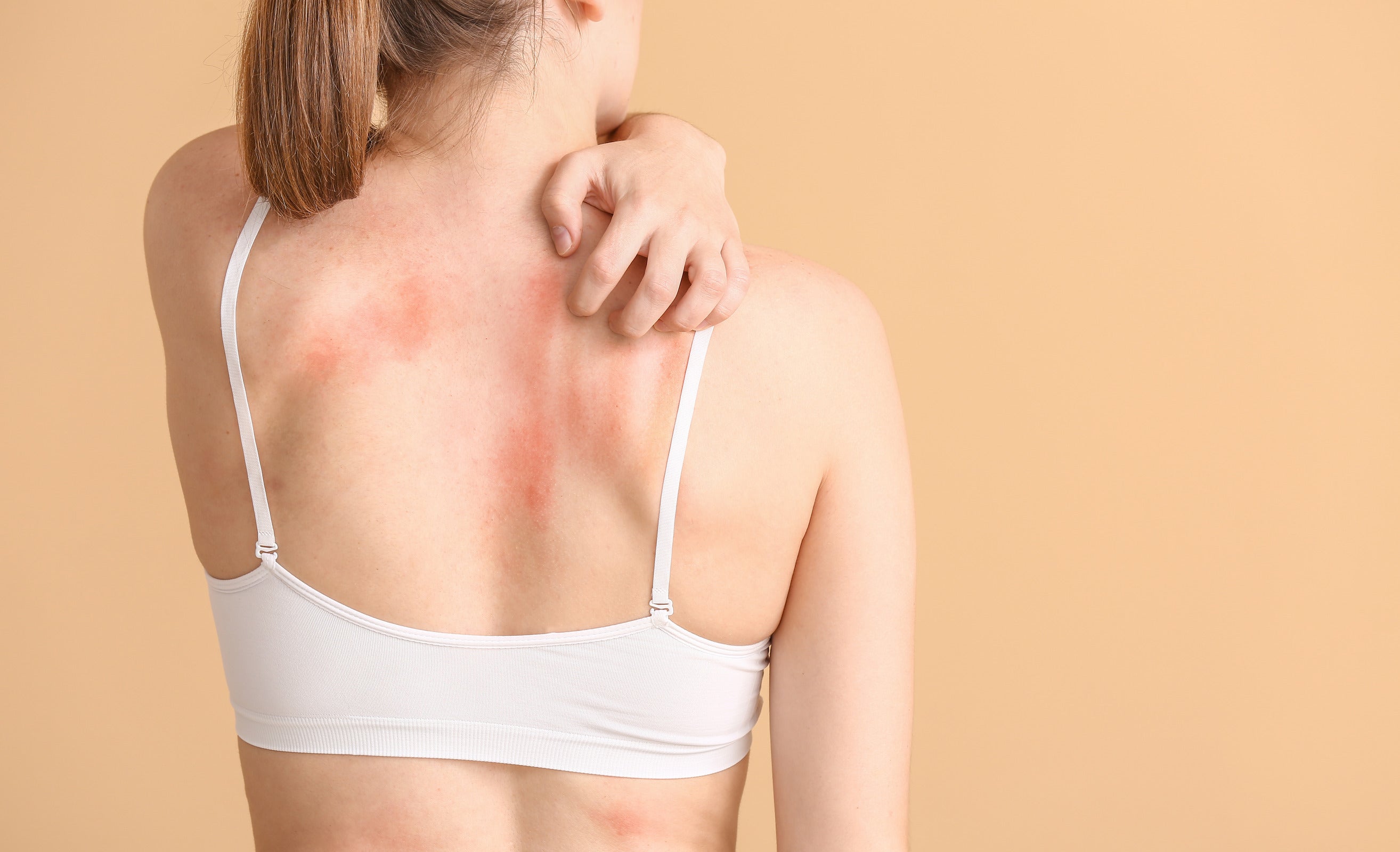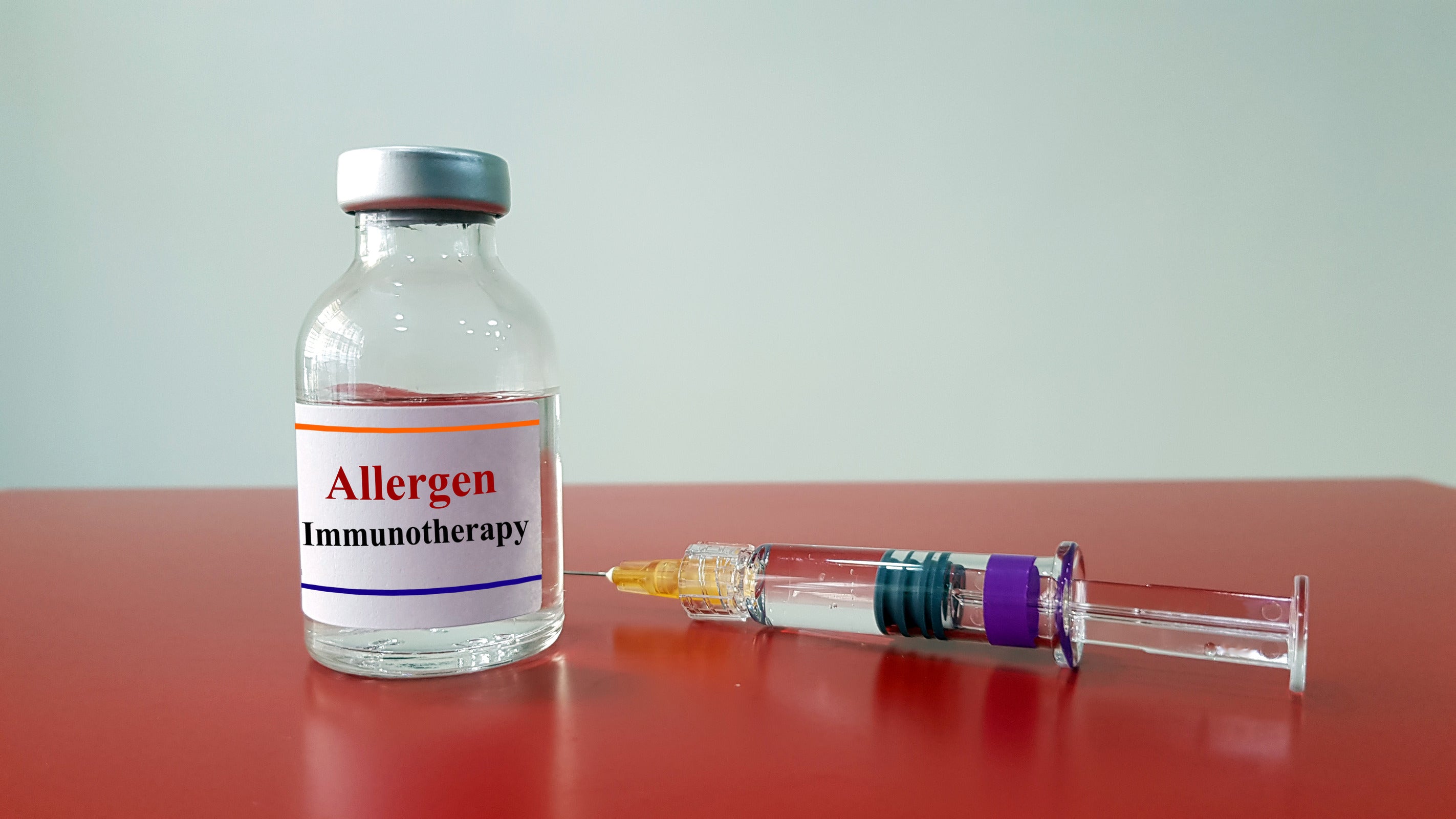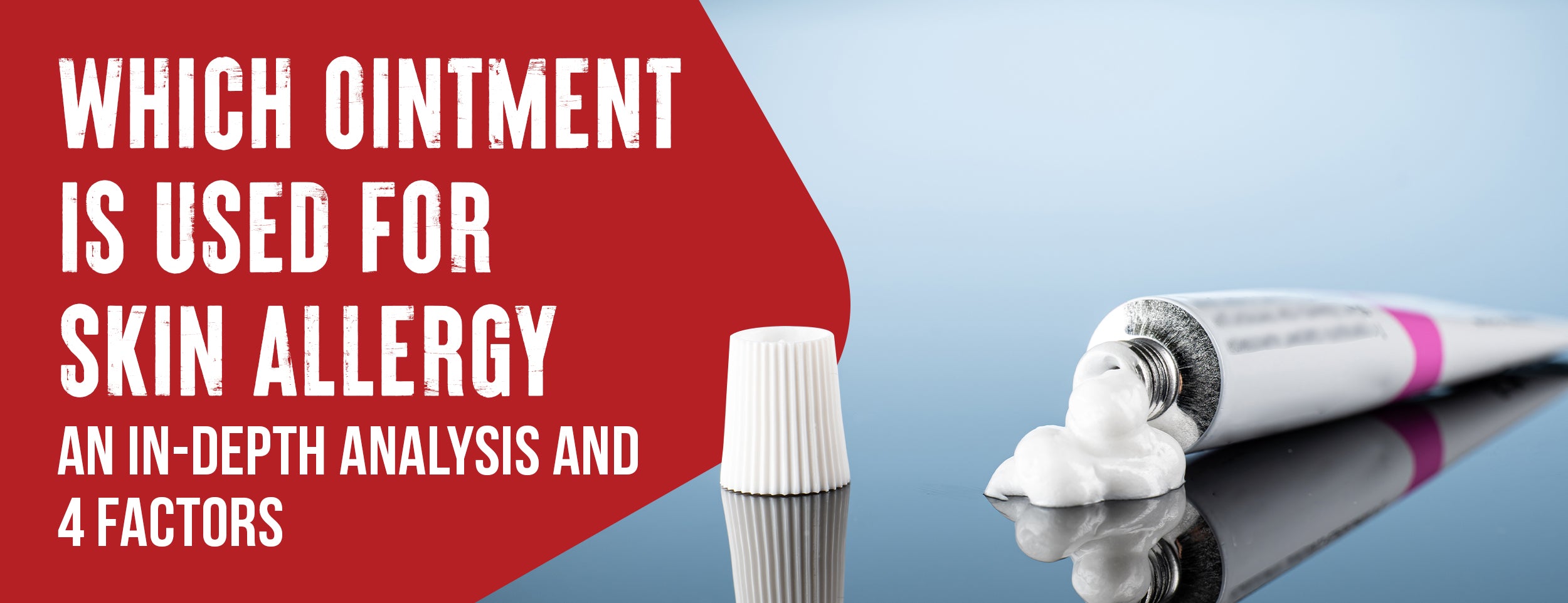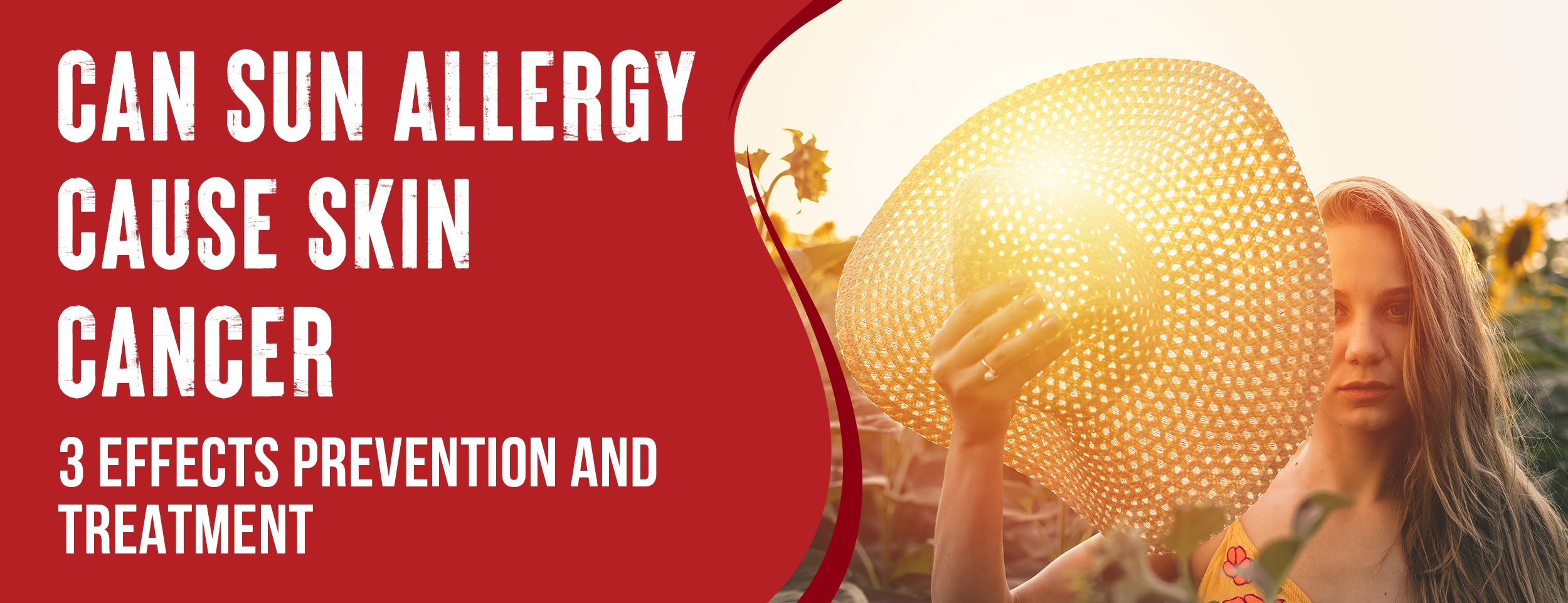When the skin gets irritated due to the immune system's response to typically harmless substances, it triggers a skin allergy known as an allergic reaction. This reaction may lead to symptoms such as rash, itching, burning, redness, bumps, and swelling.
Skin allergies include eczema, contact dermatitis, hives, psoriasis, seborrheic dermatitis, angioedema, heat rash, poison ivy, and shingles. Symptoms and severity of these conditions differ, resulting in tailored treatment approaches.
In this blog post, we will explore the various skin allergies, recognize their symptoms and triggers, and know multiple treatment options with prevention strategies.
Common 4 Types of Skin Allergy

Different skin allergies can affect people uniquely, each with specific traits. Understanding each type provides insights for effective management and treatment strategies. This knowledge aids in pinpointing triggers and customizing approaches to ease symptoms and boost skin health.
Contact Dermatitis
Contact dermatitis arises from skin inflammation triggered by particular substances. It typically falls into two categories: irritant contact dermatitis, induced by chemicals, and allergic contact dermatitis, which occurs when the skin responds to an allergen. Common culprits include nickel, present in many everyday objects, and latex or rubber.
Eczema (Atopic Dermatitis)
Typically manifests in early childhood but can develop at any stage. It is identified by dry, itchy skin that may become inflamed and discolored. The precise origin of eczema remains elusive, yet it is thought to stem from an exaggerated immune system reaction to irritants.

Hives (Urticaria)
Hives, or urticaria, are raised, itchy bumps that appear on the skin. They are typically red and can occur anywhere on the body. Hives are often a reaction to allergens, but other factors like heat, stress, or exercise can also trigger them.
Angioedema
Angioedema is like hives, but it affects more profound layers of the skin, often around the face and lips, and sometimes the hands, feet, and throat. An allergic reaction can cause it, but the cause is occasionally unknown.
Skin Allergies: 4 Signs and Symptoms

Skin allergies can be tricky, especially if you're unsure what's causing them. Let's break down the usual signs and triggers of each common skin allergy.
Contact Dermatitis (Irritant and Allergic)
Symptoms:
- Red, itchy skin.
- Burning or stinging sensation.
- Blisters that may ooze or become crusty.
Common Triggers:
- Certain metals, like nickel.
- Latex or rubber products.
- Harsh soaps, detergents, or cleaning products.
- Fragrances or cosmetics.
Eczema (Atopic Dermatitis)
Symptoms:
- Red, inflamed skin.
- Intense itching.
- Dark-colored patches of skin.
Common Triggers:
- Dry skin.
- Irritants such as soaps and detergents.
- Stress.
- Heat and sweating.

Hives (Urticaria)
Symptoms:
- Red or flesh-colored bumps on the skin.
- Itching, which may be severe.
- Swelling on the skin's surface.
Common Triggers:
- Certain foods, especially peanuts, eggs, nuts, and shellfish.
- Medications, such as antibiotics.
- Insect bites or stings.
- Physical stimuli include pressure, temperature, exercise, and sun exposure.
Angioedema (Swelling)
Symptoms:
- Swelling beneath the skin, often around the eyes and lips.
- Swelling of the hands, feet, and throat.
- Pain or warmth in affected areas.
Common Triggers:
- Certain medications, including blood pressure drugs.
- Pollen or pet dander are examples of specific allergens.
- Insect bites or stings.
- Physical factors like heat, cold, or pressure.
A Variety of Skin Allergies: 4 Treatments

If you're dealing with a skin allergy, it's essential to know that several treatment options are available. Here's a rundown of some common approaches:
Over-the-Counter Remedies
These are treatments you can buy without a prescription. They can help control symptoms and provide relief. Here are some examples:
- Antihistamines: reduce itchiness and allergies.
- Corticosteroid creams: These can help reduce inflammation and itching.
- Moisturizers: These products can soothe dry, irritated skin, providing relief and hydration to promote healthier skin.

Prescription Medications
Sometimes, more than over-the-counter treatments are needed. A more potent medication may be prescribed in these cases by your doctor. These could include:
- Topical corticosteroids: These are like over-the-counter versions but are more muscular.
- Oral corticosteroids: These are used for severe symptoms.
- Immunosuppressants: These can help if your skin allergy is because of an overactive immune system.
Immunotherapy
Immunotherapy involves exposing you to small amounts of the allergen. The idea is to help your body become less sensitive to it. This method is often used when other treatments aren't effective.
Skin Allergies Diagnosing: 3 Steps

Getting a proper diagnosis is essential if you've noticed some unusual skin reactions. This can help you understand what's causing your symptoms and how best to treat them. Here's how doctors typically diagnose skin allergies:
Skin Tests
This is often the first step in diagnosing a skin allergy. The process involves:
- Prick Test: The suspected allergen is pricked into the skin.
- Intradermal Test: A minute dose of the allergen is administered subcutaneously.
- Observation: The doctor will watch for signs of an allergic reaction, like swelling or redness.
Blood Tests
Sometimes, a skin test isn't possible or doesn't give apparent results. In these cases, a doctor might order a blood test. Here's what you can expect:
- Sample Collection: Blood is collected from a vein in your arm.
- Lab Testing: The blood is sent to a lab, where it's tested for specific antibodies your body might make when it's allergic to something.

Patch Tests
Patch tests are often used to diagnose contact dermatitis. Here's how they work:
- Allergen Application: Small amounts of potential allergens are applied to patches and placed on your skin.
- Waiting Period: The patches stay on your skin for 48 hours.
- Observation: The doctor checks for allergic reactions when the patches are removed.
Allergies to the Skin: 4 Prevention Strategies
Preventing skin allergies starts with understanding what triggers them and taking steps to avoid those triggers. Here are some strategies that can help:
Dodging Known Allergens
Once you know what causes your allergic reactions, it's easier to avoid them. Here's how:
- Read Labels: Whether it's food, cosmetics, or laundry detergent, always check the label.
- Wear Protective Clothing: Wearing long sleeves and gloves can help protect your skin if you're allergic to something in your environment.
Caring for Sensitive Skin

Maintaining a solid skincare regimen is crucial in preserving skin health and avoiding adverse reactions. Here are some helpful tips:
- Use Hypoallergenic Products: These are less likely to cause an allergic reaction.
- Moisturize Regularly: Well-hydrated skin is less susceptible to irritation and dryness, resulting in a healthier and more radiant complexion.
- Avoid Harsh Soaps: These can strip your skin of natural oils, making it more sensitive to allergens.
Maintaining a Healthy Diet
Certain foods can trigger skin allergies. To prevent this:
- Analyze Food Diaries: Food diaries can help identify foods that trigger your allergies.
- Try an Elimination Diet: This entails eliminating suspected allergens and slowly reintroducing them to determine the ones triggering a reaction.

Daily Management Strategies
Finally, there are things you can do every day to help prevent skin allergies:
- Manage Stress: High stress levels can sometimes trigger skin allergies. Techniques like yoga or meditation can help.
- Stay Hydrated: Your skin needs hydration. Drink enough water (10-12 glasses) daily.
- Sleep Plenty: Try to Sleep at least 6-8 hours daily. Sleep deprivation weakens your immune system, which increases allergies.
Conclusion
Alright, lovely readers, we've come to the end of our skin allergy exploration. We've covered common skin allergies, decoded symptoms, identified triggers, explored diagnosis and treatment options, and shared prevention strategies for healthy skin.
Remember, staying informed and proactive about your skin health is key. If you suspect a skin allergy, consult a healthcare professional.
In the realm of skin allergies, knowledge wields power. The greater your understanding, the more adept you become at handling unexpected skin issues. Here's to radiant, healthy skin! Until we meet again, continue to sparkle and flourish.

















![The Most Common Food Allergies That Cause Itchy Skin [6 Common Symptoms]](http://drnumb.com/cdn/shop/articles/Can_Food_Allergies_Cause_Itchy_Skin__17_Listed_6_Symptoms_Common.jpg?v=1714999986)

